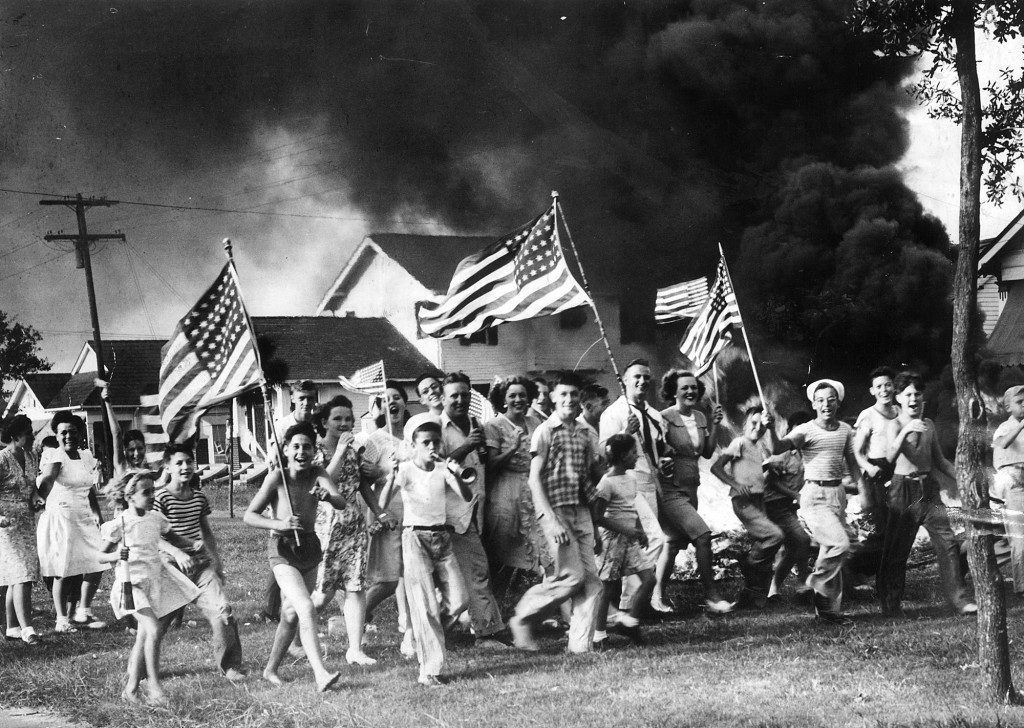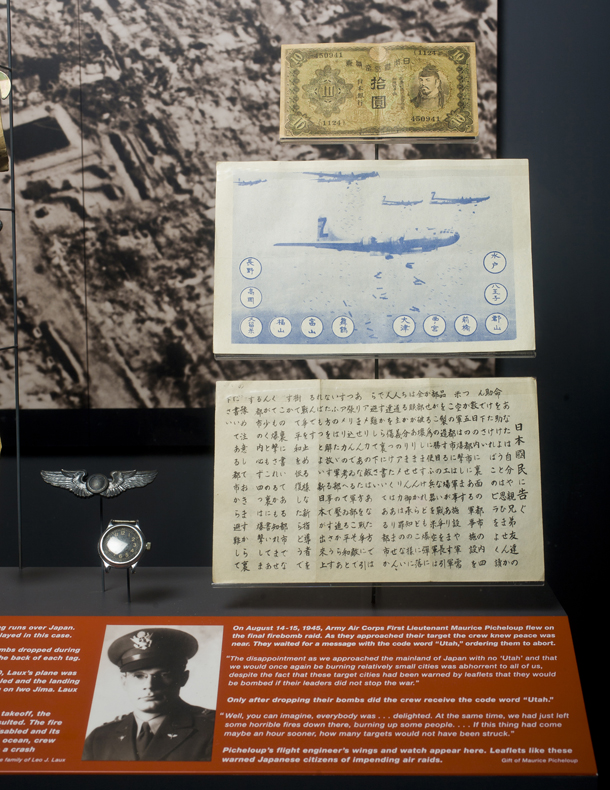Posts Tagged ‘End of War’


As the anniversaries of the end of World War II hostilities and V-J Day approach, The National WWII Museum’s plans are underway for events honoring the men and women who fought for America’s freedom. On the 70th Anniversary of V-E Day, the Museum launched a community initiative regarding the local celebration pictured below. Originally appearing in The Times-Picayune, the iconic photograph was taken by Oscar J. Valeton Sr. and depicts the overwhelming exuberance felt throughout New Orleans neighborhoods when victory over Japan was declared.

“New Orleanians celebrate V-J Day and the end of World War II”
Photo by Oscar J. Valeton Sr.
Courtesy of the Times-Picayune
With the support of NOLA.com | The Times-Picayune, the Museum is asking the public for help indentifying all of the individuals in the photograph in order to connect with them and gather surviving members for a special reunion. The reunion will feature a private reception for these individuals and their families, along with a special ceremony commemorating the end of the war.
If you are in the photo, know the identity of someone who is, or simply have stories to share about V-J Day in New Orleans, NOLA.com wants to hear from you. Learn more about how to join the conversation here.




Gift of Maurice Picheloup, The National WWII Museum Inc., 2000.252
Although the atomic bombings of Hiroshima and Nagasaki in August 1945 hastened the end of World War II, the fighting did not stop immediately. As the Japanese government debated surrender, the Allies kept up the pressure through the continued fire-bombing of Japanese cities by B-29 Superfortresses. The last of these bombing raids took off from Guam on the evening of August 14th, only a few hours before the Japanese surrendered. Army Air Corps 1st Lieutenant Maurice Picheloup of New Orleans was on this raid.
Prior to the raid, American bombers dropped thousands of leaflets like this one over eleven Japanese cities. The leaflet, the brainchild of General Curtis E. LeMay, informed Japanese civilians that the cities named on the paper would be destroyed by American bombers within seventy-two hours. The leaflet served two purposes: to allow Japanese civilians a chance to flee the imminent bombing and to point out the Japanese military’s weakness. It reads in part, “This advance notice will give your military authorities ample time to take necessary defensive measures to protect you from our inevitable attack. Watch and see how powerless they are to protect you.”
(more…)



Born on December 30, 1884, Hideki Tojo would rise to the heights of power within the Japanese military and government. Following in his father’s footsteps, he joined the Imperial Japanese Army and was commissioned a lieutenant in 1905. By 1937, he was Chief of Staff of the elite Kwantung Army, and in July 1941 was appointed Minister of War. A mere three months later, he was named Prime Minister.
Tojo was nationalist, militaristic, and in favor of an aggressive foreign policy. He believed strongly in Japanese expansionism and unapologetically seizing land from China and maintaining control over Korea. He fully supported the attack on Pearl Harbor and other Allied outposts in the Pacific. The success of these attacks as well as other early-war victories boosted Tojo’s popularity among the Japanese populace, but following the blow to the Imperial Japanese Navy at Midway and subsequent losses, his likeability quickly declined. When Saipan fell to US troops in July 1944, Tojo saw that Japan could not win the war and resigned, possibly under coercion from Hirohito.
(more…)






